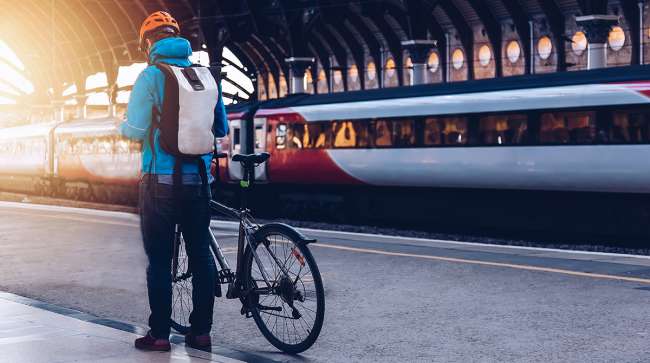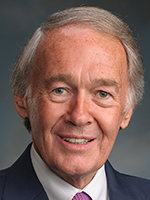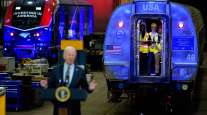Senior Reporter
Sen. Ed Markey, Rep. Steve Cohen Introduce ‘Complete Streets’ Legislation

[Stay on top of transportation news: Get TTNews in your inbox.]
Establishing a nationwide mandate to ensure municipalities design streets with every user in mind is the essence of legislation a group of federal lawmakers introduced this month.
The Complete Streets Act would aim to guarantee that transportation corridors are built to provide safe access for every mode of transportation, not just cars and trucks.
Commercial vehicles, pedestrians, cyclists, commuters by car and bus and individuals who rely on transit would be accommodated under such “complete streets” designs.
Promoting safety is the legislation’s main objective, the measure’s sponsors said recently.

Markey
“Our roads and sidewalks are far more than a means of transportation, they are a means of economic growth and community development, and we must make them safe and accessible for everyone,” Sen. Ed Markey (D-Mass.), a member of the surface and commercial transportation committees, explained July 10.
“Over the past decade, this country has seen a dramatic increase in the number of pedestrians killed while walking. We need streets that can accommodate all means of transportation, from foot traffic and strollers to cars, light trucks and 18-wheelers,” added Rep. Steve Cohen (D-Tenn.), a member of the House Transportation and Infrastructure Committee, offering companion legislation.
Senate co-sponsors include Democrats Richard Blumenthal of Connecticut and Brian Schatz of Hawaii. Joining Cohen on the bill in the House are Democratic Reps. Ruben Gallego of Arizona and Adriano Espaillat of New York.

Cohen
“Improving the safety of our streets for all users is vitally important throughout our neighborhoods and communities,” added Espaillat, whose district includes Manhattan.
Under the bill, states would allocate 5% of federal highway funds they receive to establish programs for the design and construction of such projects that include multiple travel modes. Metropolitan planning organizations would be tasked with certifying that “complete streets” policies adhere by certain U.S. Department of Transportation requisites. The Secretary of Transportation, states and metropolitan planning organizations would be required to adopt standards for federal surface transportation projects throughout the planning, development and operation phases.
Provisions having to do with “complete streets” concepts are likely to be proposed during Congress’ consideration of an upcoming highway bill. The current five-year FAST Act highway law expires October 2020.
“We’ve spent decades now designing our streets to move cars as quickly as possible while neglecting the safety of everyone using the street. The result? The number of people struck and killed by drivers while walking increased by 35% over the last decade,” Emiko Atherton, director of the National Complete Streets Coalition, a program of Smart Growth America, said in a statement that accompanied the legislation’s introduction.
Thank you @SenMarkey & @RepCohen for introducing the #CompleteStreets Act and to @brianschatz, @SenBlumenthal, @RepEspaillat, & @RepRubenGallego for co-sponsoring. This bill will make streets safer for everyone whether they drive take transit walk bike roll or scoot ! pic.twitter.com/TC3AV6zSeJ — Smart Growth America (@SmartGrowthUSA) July 11, 2019
“Since day one, Lyft has been committed to redesigning cities around people instead of cars. This is why we focus on making car ownership optional, investing in sustainable transportation options and partnering with like-minded organizations through the Complete Streets Coalition. We’re proud to support the [Complete Streets Act] and the valuable impact it would have on improving road and pedestrian safety in cities across the country,” added Lauren Belive, director of federal government affairs at Lyft, in the same statement.
According to U.S. DOT, the concept “encompasses many approaches to planning, designing and operating roadways and rights of way with all users in mind to make the transportation network safer and more efficient. ‘Complete Street’ policies are set at the state, regional, and local levels and are frequently supported by roadway design guidelines.”
“[Complete streets] may address a wide range of elements, such as sidewalks, bicycle lanes, bus lanes, public transportation stops, crossing opportunities, median islands, accessible pedestrian signals, curb extensions, modified vehicle travel lanes, streetscape and landscape treatments,” per DOT.
The National Highway Traffic Safety Administration indicated that there were 37,133 fatalities from motor vehicle crashes in 2017, the most recent data.




